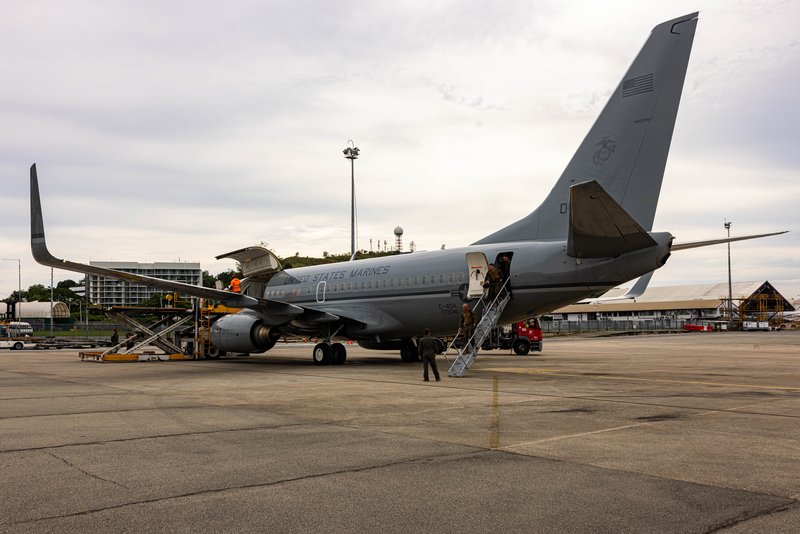How US marines and sailors are training for humanitarian assistance
While much recent US and allied exercise activity in the Pacific has focused on combat operations, the skills necessary for supporting humanitarian assistance and disaster relief (HADR) missions are still being practiced and evolved.
USMC and USN personnel from Marine Rotational Force – Darwin (MRF-D) 24.3 recently took part in a training exercise in Papua New Guinea (PNG) focused on strengthening Indo-Pacific HADR capabilities... Continues below
Newsletter Sponsors:

Above: US personnel arrive in Papua New Guinea ahead of MRF-D’s HADR exercise held earlier in May. (Photo: USMC)
MRF-D’s team arrived in Port Moresby aboard a C-40A transport on 30 April. The aircraft was utilised for international movement of equipment and personnel, engaging in joint planning and execution exercises with the US embassy, and conducting subject matter expert exchanges with the Papua New Guinea Defense Force (PNGDF).
Participating marines and sailors were part of the 13th annual iteration of MRF-D. The current rotation, which began in late March, includes approximately 2,000 US service members based in Australia’s Northern Territory, for a series of exercises and training events with Australian Defence Force.

MVRsimulation VRSG: Train as you fight in the virtual environment. Watch the video: Recreating a live Special Operations Forces exercise in a mixed-reality training environment.
The six-month deployment is part of a 25-year agreement made in 2011 by then-President Barack Obama and then-Prime Minister Julia Gillard to improve the capacity to respond to crises and contingencies in the Indo-Pacific region.
According to Marine Corps representatives, the HADR exercise, running between 30 April and 9 May was conducted in coordination with the US embassy in Port Moresby, focusing on projecting select medical capabilities, equipment, supplies and Marine Air-Ground Task Force command and control capabilities off-continent.
‘The purpose of this exercise is to validate our crisis response capability while strengthening regional partnerships,’ said Col Brian T Mulvihill, the commanding officer of MRF-D 24.3. ‘It is important for us to maintain readiness and be prepared to provide assistance in times of need.’
Key events in the exercise included religious leader engagements, academic briefings, site surveys and medical interoperability checks. This encompasses various aspects of medical care, including, but not limited to, preventative medicine and disease prevention.

During the window of May 6-8, MRF-D 24.3 USN medical personnel conducted an engagement with PNGDF counterparts facilitating the exchange of best practices and techniques, enhancing proficiency and patient care skills.
‘This exercise highlights the ability of MRF-D to integrate seamlessly with local organisations and institutions to provide effective humanitarian assistance and disaster relief capabilities,’ added Mulvihill.
The fatal mudslides experienced in PNG in recent days only serve to underline the need for such exchanges and maintaining armed forces’ readiness to provide medical and other assistance in times of natural disaster. Even when pivoting towards facing up to China’s expansionist aims in the Indo-Pacific, planners should be in mind that often nature can be the ‘enemy’, making preparation for this type of contingency vital.
Other articles in this newsletter:
An assault on courses? Why the US Army is cutting back distributed learning
Safer skies? How US Army aviation training aims to fix the service’s accident rate problem
Don't want to miss out on future Decisive Edge content? Make sure you are signed up to our email newsletters












